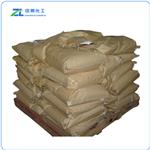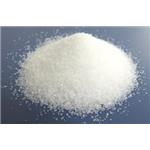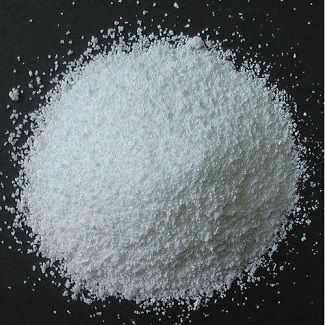- Magnesium Sulfate
-

- $120.00 / 1kg
-
2025-04-14
- CAS:7487-88-9
- Min. Order: 1kg
- Purity: 99%
- Supply Ability: 20ton
- Magnesium sulfate
-

- $3.60 / 1kg
-
2025-04-12
- CAS:7487-88-9
- Min. Order: 1kg
- Purity: ≥99%
- Supply Ability: 3000tons/month
Related articles - What is Magnesium sulfate?
- Magnesium sulfate or magnesium sulphate (in British English) is a chemical compound, a salt with the formula MgSO4, consisting....
- Sep 7,2021
|
| | Magnesium sulfate Basic information |
| | Magnesium sulfate Chemical Properties |
| Melting point | 1124 °C | | density | 1.07 g/mL at 20 °C | | bulk density | 600kg/m3 | | vapor density | <0.01 (vs air) | | vapor pressure | <0.1 mm Hg ( 20 °C) | | storage temp. | no restrictions. | | solubility | H2O: 1 M at 20 °C, clear, colorless | | form | powder (very fine) | | Specific Gravity | 2.66 | | color | slightly gray | | Odor | at 100.00 %. odorless | | PH | 7.9 (50g/l, H2O, 25℃) | | Odor Type | odorless | | Water Solubility | Soluble in water. Slightly soluble in alcohol, glycerol. Insoluble in acetone. | | Sensitive | Hygroscopic | | λmax | λ: 260 nm Amax: 0.03
λ: 280 nm Amax: 0.02 | | Merck | 14,5691 | | Dielectric constant | 8.2(Ambient) | | Stability: | Stable. Hygroscopic. | | LogP | -1.031 (est) | | CAS DataBase Reference | 7487-88-9(CAS DataBase Reference) | | NIST Chemistry Reference | Magnesium sulfate(7487-88-9) | | EPA Substance Registry System | Magnesium sulfate (7487-88-9) |
| | Magnesium sulfate Usage And Synthesis |
| Description | Magnesium sulfate is an inorganic salt (chemical compound) containing magnesium, sulfur and oxygen, with the formula MgSO4. It is strongly hygroscopic and often encountered as the heptahydrate sulfate mineral epsomite (MgSO4•7H2O), commonly called Epsom salt. And the monohydrate, MgSO4•H2O, is found as the mineral kieserite.

In gardening and other agriculture, magnesium sulfate is used to correct a magnesium or sulfur deficiency in soil.
In food preparation, magnesium sulfate is used as a brewing salt in beer production or used as a coagulant for making tofu.
In chemistry, anhydrous magnesium sulfate is commonly used as a desiccant in organic synthesis due to its affinity for water.
For Marine use, magnesium sulfate heptahydrate is used to maintain the magnesium concentration in marine aquaria which contain large amounts of stony corals.
For medicine use, it is used in pregnant women to control seizures due to certain complications of pregnancy (eg, severe toxemia) and to control high blood pressure, severe brain function problems (encephalopathy), and seizures in children who have sudden, severe inflammation of the kidneys (acute nephritis). Besides, magnesium sulfate is also used as a laxative to relieve occasional constipation. | | Chemical Properties | Magnesium sulfate (MgS04) is a colorless crystal with a bitter, saline taste. It is soluble in glycerol and used in fireproofing, textile processes, ceramics, cosmetics, and fertilizers. | | Chemical Properties | Magnesium Sulfate is found widely in nature as either a double salt or as a hydrate, colorless crystals,very soluble in water, soluble in glycerol, sparingly soluble in alcohol. | | Physical properties | In their hydrated form, these salts have a pH of 6.0
(5.5 to 6.5) in solution. These magnesium sulfates are
white crystalline solids. Their densities are: 2.66 g/cm3
(anhydrous); 2.445 g/cm3 (monohydrate); 1.68 g/cm3
(heptahydrate). Solubilities in water are: anhydrous= 26.9 g/100 ml (0°C); monohydrate= 25.5 g/100 ml (20°C); heptahydrate=71 g/100 ml (20°C).
Magnesium sulfate is found in nature in many salt
deposits and mineral waters, occurring as hydrates or
double salts. The heptahydrate or Epsom salt was discovered
in 1695, found inthemineralwater at Epsom. Kieserite
and epsomite are the two most important minerals. Other
than these and the above hydrates, magnesium sulfate is
also found in several other minerals, including langbeinite, leonite,vanthoffite,bloedite,kainite,polyhalite, | | Uses | In agriculture and gardening, magnesium sulfate is
used to correct magnesium deficiency in soil, since
magnesium is an essential element in the chlorophyll
molecule. It is most commonly applied to potted
plants, or to magnesium-hungry crops, such as potatoes,
tomatoes, peppers, and roses. The advantage of
magnesium sulfate over other magnesium compounds
(such as dolomitic limestone) is its high solubility.
MgSO4 has been used in organic synthesis to remove
water from nonaqueous solutions before the organic
reaction is started. Since it is insoluble in most organic
solvents, its addition forms hydrates that can be easily
removed.
Epsom salt is also used to prepare footbaths,
intended to soothe sore feet. The reason for the inclusion
of the salt is partially cosmetic. However, magnesium
sulfate can also be absorbed into the skin,
reducing inflammation. It is also sometimes found in
bottled mineral water, and accordingly is sometimes
listed in the contents thereof. Magnesium sulfate heptahydrate
is also used to maintain the magnesium concentration
in marine aquaria which contain large amounts
of stony corals as it is slowly depleted in their calcification
process, precipitation into calcium carbonate. Oral
Epsom salt is used as a saline laxative as well as for
replacement therapy in “hypomagnesaemia” (lack of
Mg2+) in animals and humans. Magnesium sulfate
paste has been used as an agent for dehydrating
(drawing) boils, carbuncles or abscesses. Magnesium
sulfate solution has also been shown to be an effective
aid in the fight against blemishes and acne when
applied directly to problematic areas. Magnesium
sulfate, when used through soaking, can soothe muscle pains and help improve rough patches in the skin. Soaking
in a warm bath containing Epsom salt (magnesium
sulfate) can be beneficial to soothe and relieve herpes
outbreak symptoms, such as itching and lesions relating
to genital herpes or shingles. | | Uses | Magnesium sulfate is suitable for sensitive molecular biology applications. It used as a component of bath salts and beauty product. It is utilized by the athletes to soothe sore muscles and effective in the removal of splinters. It is commonly used as a desiccant in organic synthesis due to its affinity for water. It acts as a brewing salt in beer production to adjust the ion content of the brewing water as well as enhance enzyme action. It plays a vital role as an antidote for barium chloride poisoning. . It is useful in controlling seizures associated with epilepsy, glomerulonephritis, or hypothyroidism. | | Uses | Magnesium sulfate is used widely in several industries including fertilizer, cement, textile, chemicals, and medicine. In the cement industry, it is used in manufacturing oxysulfate cement. In medicine, it is an analgesic and cathartic. An important application of anhydrous magnesium sulfate in the laboratory involves drying organic solvents required for syntheses and GC analysis.
In the textile industry, magnesium sulfate is used in finishing composition for dressing cotton; for weighting and sizing silk; as a mordant for fixing basic dyestuffs on wool; and in fireproofing fabrics. It also is a component of certain types of electrolytic plating baths; of various photographic solutions; of cosmetic lotions. It is a catalyst carrier; a dietary supplement in cattle feed; a coagulant for rubber and plastic; and is used in making citric acid and several magnesium salts, such as magnesium stearate. | | Production Methods | Magnesium sulfate is widely distributed in nature, e.g. in salt deposits as kieserite, as Epsom salt MgSO4 . 7H20, in the form of double salts such as kainite 4KCl . 4MgSO4 . 11H20 and langbeinite K2SO4 . 2MgSO4, and in brines. Large quantities of kieserite, Epsom salt and anhydrous magnesium sulfate are produced in the processing of potassium salts. Magnesium sulfate is also produced by reacting magnesium carbonate or seawatermagnesium hydroxide with sulfuric acid. | | Definition | ChEBI: A magnesium salt having sulfate as the counterion. | | Indications | Magnesium sulfate prevents convulsions in preeclampsia
and directly uncouples excitation–contraction in
myometrial cells through inhibition of cellular action
potentials. Furthermore, magnesium sulfate decreases
calcium uptake by competing for its binding sites, activating
adenylyl cyclase (thereby reducing intracellular
calcium), and stimulating calcium-dependent adenosine
triphosphatase (ATPase), which promotes calcium uptake
by the sarcoplasmic reticulum. Magnesium is filtered
by the glomerulus, so patients with low glomerular
filtration will have low magnesium clearance.
Although the compound does have some cardiac side
effects, magnesium sulfate may be preferred over β-
adrenergic agents in patients with heart disease, diabetes,
hypertension, or hyperthyroidism. | | Application | Magnesium sulfate is utilized in the potassium chemicals industry for the manufacture of potassium sulfate (from potassium chloride), sodium sulfate and potash magnesia (potassium magnesium sulfate). Magnesium sulfate, particularly as kieserite, is used as a fertilizer (ca. 80% of total consumption). It is also used in the textile industry, in the manufacture of building and refractory materials, in the pulp industry and in the production of animal feedstuffs and motor oil additives. | | Preparation | Hydrated magnesium sulfate occurs in nature as the minerals kieserite and epsomite. The salt is mined in large scale from these and other naturally occurring minerals. The salt also is prepared in the laboratory by the action of sulfuric acid on magnesium oxide, hydroxide, or carbonate followed by evaporation and crystallization:
MgO + H2SO4 → MgSO4 + H2O
Mg(OH)2 + H2SO4 → MgSO4 + 2H2O
MgCO3 + H2SO4 → MgSO4 + CO2 + H2O
Crystallization at temperatures between 1.8 and 48°C yields heptahydrate, MgSO4•7H2O. Below 1.8°C, a dodecahydrate , MgSO4•12H2O crystallizes out. Above 48°C crystals of lower hydrates form. The anhydrous salt is obtained by heating the heptahydrate at about 500°C in a rotary drum; or dehydrating above 150°C in the presence of sulfuric acid. | | Biological Functions | Magnesium sulfate may be effective in terminating refractory
ventricular tachyarrhythmias, particularly polymorphic
ventricular tachycardia. Digitalis-induced arrhythmias
are more likely in the presence of magnesium
deficiency. Magnesium sulfate can be administered
orally, intramuscularly, or, preferably, intravenously,when a rapid response is intended.The loss of deep tendon
reflexes is a sign of overdose. | | General Description | Magnesium sulfate is an anhydrous magnesium salt. | | Agricultural Uses | Magnesium sulphate is a white compound existing both in
anhydrous (rhombic) and hydrated crystalline forms. The
monohydrate MgSO4·H2O (monoclinic) occurs in nature
as kieserite. It is a greyish-white crystalline powder
which contains about 16 % magnesium and is used as a
fertilizer. It is regarded as a concentrated form of epsom
salt, having less water of crystallization. The commonest
hydrate is heptahydrate MgSO4·7H2O(also called
rhombic or epsom salt) which occurs naturally as the
mineral epsomite. It is a white powder with a bitter,
saline taste. The salt in the monocliic form loses its
structural water at 150°C, while the rhombic form loses
water at 200°C.
Magnesium sulphate is used in sizing and freproofng
cotton and silk, in tanning leather, in the manufacture of
fertilizers, in explosives and matches, in medicines as a
laxative, and as a veterinary medicine for the treatment of
inflammations and infected wounds. | | Biochem/physiol Actions | Magnesium sulfate has anti-convulsant, anti-inflammatory and vasodilatory properties. Magnesium sulfate relaxes smooth muscles. In acute asthma patients, use both intravenous and nebulization of magnesium sulfate as additive treatment improves pulmonary function. Magnesium sulfate reduces preterm labor in high risk pregnant women. | | Clinical Use | There is much debate as to the efficacy of magnesium
sulfate. For effective inhibition of uterine activity,
enough must be given to maintain a blood plasma level
of at least 5.5 mEq/L. Even at this level, tocolysis may
be hard to achieve. | | Side effects | The side effects of magnesium sulfate administration are dose dependent. As magnesium levels increase, skeletal muscle weakness increases and CNS depression and vascular dilation occur. Magnesium sulfate infusion commonly results in a slight decrease in blood pressure during epidural anesthesia.
Cardiac muscle is not affected to a clinically evident degree when magnesium is administered at therapeutic levels, although magnesium can have profound myocardial effects during a gross overdose.
Magnesium antagonizes the vasoconstrictive effect of α-agonists, so ephedrine and phenylephrine are likely to less effectively increase maternal blood pressure when administered concomitantly with magnesium.
Magnesium is eliminated unchanged by the kidneys. In a patient who is receiving a maintenance infusion of magnesium and who has decreasing urine output, blood levels of magnesium quickly increase, as do related side effects.
Other side effects of magnesium sulfate include the following: (1) Cutaneous vasodilation with flushing (2) Headache and dizziness (3) Nausea (4) Skeletal muscle weakness (5) Depression of deep tendon reflexes (6) Respiratory depression (7) ECG changes | | Safety Profile | A poison by
intravenous route. Moderately toxic by
ingestion, intraperitoneal, and subcutaneous
routes. Human systemic effects: heart
changes, cyanosis, flaccid paralysis with
appropriate anesthesia. An experimental
teratogen. Mutation data reported.
Potentially explosive reaction when heated
with ethoxyethynyl alcohols (e.g., l-ethoxy
3-methyl-1-butyn-3-01). When heated to
decomposition it emits toxic fumes of SOx.
See also SULFATES. | | Purification Methods | Crystallise it from warm H2O (1g/mL) by cooling. Dry the heptahydrate (Epsom salt) at ~250o until it loses 25% of its weight. Its solubility in H2O is 36% at 20o, 55% at 60o and 74% at 100o; above 110o the solubility decreases with rise of temperature. Store it in a sealed container. | | Precautions | Magnesium sulfate is not for use in patients with heart block or extensive myocardial damage. Use it with caution in patients with impaired renal function, in digitalized patients, and with concomitant use of other central nervous system depressants or neuromuscular blocking agents. Intravenous administration is contraindicated during the 2 hours preceding delivery. Oral administration is contraindicated in patients with abdominal pain, nausea, vomiting, fecal impaction, or intestinal irritation, obstruction, or perforation. | | References | 1. https://en.wikipedia.org/wiki/Magnesium_sulfate
2. https://www.drugs.com/cdi/magnesium-sulfate.html
3. https://pubchem.ncbi.nlm.nih.gov/compound/magnesium_sulfate
4. http://www.emedicinehealth.com/drug-magnesium_sulfate/article_em.htm |
| | Magnesium sulfate Preparation Products And Raw materials |
| Raw materials | Sulfuric acid-->Magnesium-->Magnesium oxide-->DOYLE DIRHODIUM CATALYST-RH2(4S-MEOX)4-->Plate-and-frame filter press-->Drying machine-->Magnesium sulfate,monohydrate | | Preparation Products | 9,9-DIMETHYL-9H-XANTHENE-->5-BROMO-2-ETHOXY-PYRIMIDINE-->2-Furaldehyde diethyl acetal-->(S)-(+)-Methyl mandelate-->2,3,5,6-TETRAFLUORO-4-METHYLBENZOIC ACID-->3',4'-(DIDECYLOXY)BENZALDEHYDE-->2-(TRIFLUOROACETYL)THIOPHENE-->2-Amino-5-chlorobenzonitrile-->Idarubicin-->Indeloxazine hydrochloride-->2-ACETYL-3-BROMOTHIOPHENE-->Cefuzonam-->Nizofenone-->TRIFORINE-->3,6,9,12-tetraoxahexadecan-1-ol-->4-Chlorobenzhydrylchloride-->2,3-DICHLORO-5-NITROPYRIDINE-->4-Acetylbenzoic acid-->METHYL 2-BROMO-5-METHOXYBENZOATE-->3-AMINO-N,N-DIMETHYL-BENZENESULFONAMIDE-->2-CHLOROSULFONYL-PYRIDINIUM, CHLORIDE-->Ceftizoxime-->DELAPRIL-->2-PROPIONYLFURAN-->Bacillus thuringiensis-->1,1,1-TRICHLOROACETONE-->5-ACETOXYMETHYL-2-FURALDEHYDE-->CYCLOOCTENE OXIDE-->2-Amino-5-bromopyrazine-->Flecainide-->METHYL2-HEXENOATE-->Pentyl isocyanate-->3-Fluoroacetanilide-->TRI-N-BUTYLPHOSPHONIUM TETRAFLUOROBORATE-->2,4,6-TRIFLUOROBENZENESULFONYL CHLORIDE-->Magnesium trisilicate-->Dofetilide-->ETHYL PROPIONYL PYRUVATE-->diammonium magnesium bis(sulphate)-->4-Chlorophenyl cyclopropyl ketone |
|